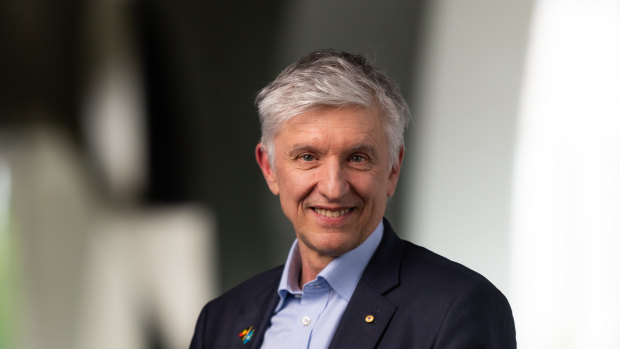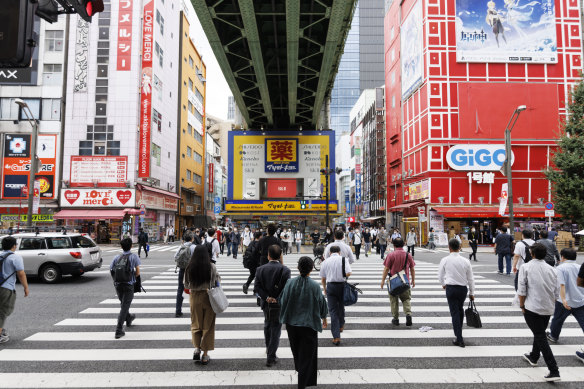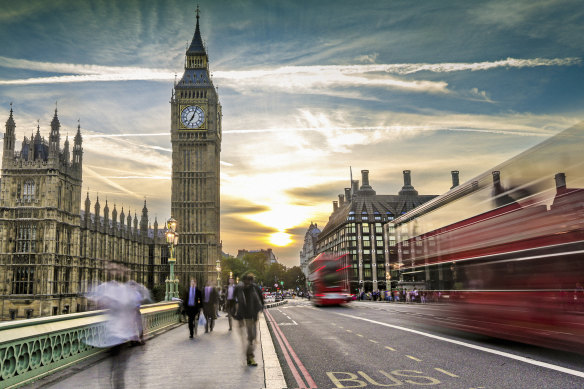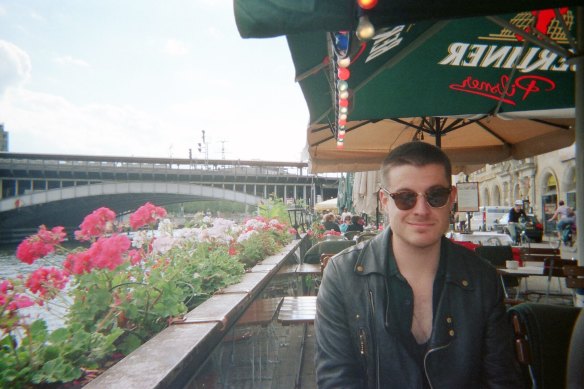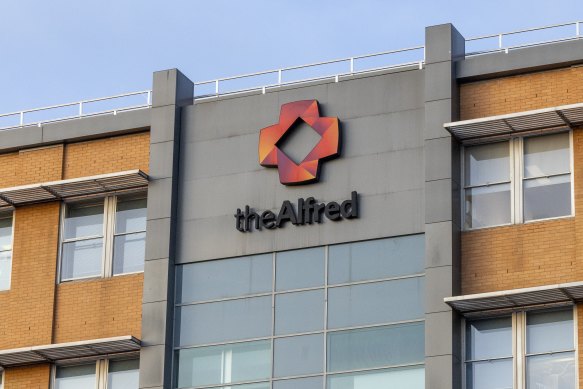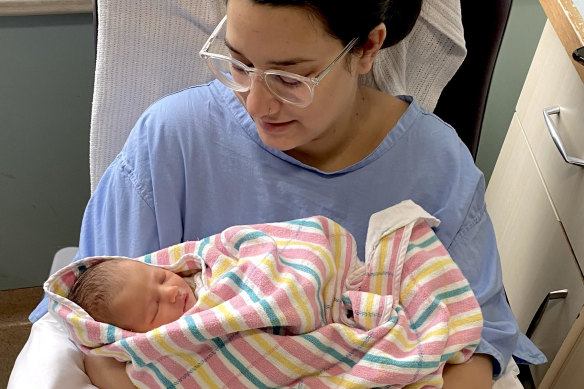Save articles for later
Add articles to your saved list and come back to them any time.
It’s a question that crops up regularly when Professor Grant McArthur meets cancer experts at far-flung international medical conferences.
“They want to know why Victoria has one of the best cancer outcomes in the world,” the Victorian Comprehensive Cancer Centre Alliance executive director says.
Professor Grant McArthur is a leader in his field.Credit: Jason South
While Australia has the world’s highest rates of cancer – 452 cases were detected per 100,000 people in 2019 — our mortality rate from the disease is relatively low.
As part of The Age’s Home Safe series, we have examined how Melbourne’s health system compares with a range of those overseas, including in Tokyo and Berlin. Data was not available for individual cities but covers a variety of countries.
If you fall sick, which global city will take the best care of you? Which health system will do the finest job steering you towards recovery?
Japan is known for it’s long-living residents. But does it have the best medical system?Credit: Viola Kam
Newly published Organisation for Economic Co-operation and Development (OECD) data shows that Australia recorded 191 deaths per 100,000 people who were diagnosed with cancer in 2021. This is significantly better than the OECD average of 202 deaths, and an improvement on mortality rates in the UK (222 deaths), Canada (200 deaths) and Germany (206 deaths).
McArthur says curbing the incidence of cancer, which is largely fuelled in Australia by obesity, physical inactivity, smoking, excessive alcohol consumption and our sun’s harsh rays, is complex.
“It involves prevention, early detection and more effective treatments,” he says. “To get good outcomes you need to be quite proficient in all those areas.”
Our access to GPs and the ease with which they can order diagnostic tests is key to our high cancer survival rates, according to McArthur.
“We have a system where primary-care physicians and other clinicians can instigate investigations for what might be cancer without needing to refer,” he says. “It’s a very simple thing.”
But it’s not so simple in some parts of the world.
In the UK, for instance, McArthur says, there are limits to the sort of tests GPs can order.
Patients often have to get a referral to a specialist, such as an oncologist, if they want a test such as a colonoscopy. This creates barriers to accessing a timely cancer diagnosis and treatment.
“There’s a much higher proportion of patients [in the UK] whose first presentation of cancer is at an emergency department,” McArthur says. “That’s a total failure of early detection.”
The health systems in Australia and the UK are often considered similar, but there are key differences.Credit: iStock
While Australians have their fair share of health challenges, high rates of heart disease, dementia and increasing numbers of people living with obesity to name a few, our health system is extremely good at keeping us alive.
Our life expectancy at birth, now about 83.3 years, is consistently one of the highest in the world, despite a small reduction during the pandemic. In Japan, a child born today can expect to live almost 85 years.
When it comes to healthy life expectancy (the amount of time a person can expect to live in full health), Australians live without illness for an average of 70.9 years, compared with 74.1 years in Japan.
Some of this success can be attributed to the quality of care we receive when we go to hospital, especially when we are seriously ill or injured.
Survival rates following an admission for a heart attack or stroke have long been considered a sign of the quality of hospital care, and Australia has the lowest rate of death following an acute heart attack than any of our comparison cities.
In another tick for the Australian hospital system, relatively few patients reported that they had been victims of a medical mistake. For example, 3 per cent of the Australian population reported a medication mistake in 2020, compared with 3.7 per cent in the UK, 4.2 per cent in Germany and 5.2 per cent in the US.
However, there are also well-publicised cracks in Melbourne’s health system, where the data shows that we are lacking compared with our peers, including longer waits for knee replacements and other life-changing operations.
As a patient, Christopher Bryant didn’t notice too many differences in the resourcing of the hospitals in Germany versus Australia.
Christopher Bryant shortly before his accident in Berlin.
It was the smaller, cultural differences that stuck out for Bryant, who was hospitalised for six weeks in Berlin after being hit by a car in 2014.
The food was an unexpected highlight. He was served little wheels of brie, fresh bread, meats, and “fancy” chocolate sweets – all the things his body was craving after his traumatic brain injury.
“I have been in Australian hospitals, and you get the kind of aeroplane food … This was not that at all. This was really nice.”
In 2014, the then 24-year-old had made what was planned to be a short stopover in the German capital after a study trip to the Edinburgh Fringe arts festival when he was hit by a car.
“It was about three in the morning. I was really drunk,” he recalls.
Bryant said he found there was less “back and forth” between patients and doctors in Berlin.Credit: Michele Mossop
“I guess I looked the wrong way, and ran out onto the highway trying to get food or something, after being out, and I just got collected by a car and woke up in hospital about a week later.”
A long road of physical and mental rehabilitation followed, during which he spent time using hospital and health services in Berlin and his home town of Melbourne.
In Melbourne, he was accustomed to more “back and forth” between patients and doctors than there was in Berlin, where he wasn’t given as much information and on one occasion staff put him on an antipsychotic drug in a bid to tackle his night restlessness but didn’t tell him.
“Yes, I’m not a medical professional, and no one with me was a medical professional, but I still wanted to know what’s going on, especially when it’s a terrifying place.
“It almost became a fight to get that knowledge.”
While he didn’t have private health insurance when he returned to Melbourne, he was able to access a neurologist, speech pathologist, occupational therapist, physiotherapist, psychologist and a neuropsychologist at the Alfred’s Acquired Brain Injury Rehabilitation Centre, a public facility in Caulfield.
The one thing that wasn’t on offer in the public system, however, was a fix for a debilitating side effect of the accident that left him without control of one of his eyes. He used glasses, which helped focus the eye in the right direction, but they didn’t always work, and the condition made him feel self-conscious.
The Alfred hospital houses one of Melbourne’s major trauma services.Credit: Wayne Taylor
He decided to take $10,000 out of his superannuation for corrective surgery through the private system, a decision he knew would impact him financially in the future. “But it’s also something that I will not ever regret because my quality of life improved so much by doing that.”
Bryant is not the only Melburnian who has faced challenges trying to access life-changing surgery.
The average waiting times in Australia for cataract surgery, hip replacements and knee replacements are significantly above the average of 10 OECD countries where there is data available. In 2022, Australian patients were waiting 62 days to have cataract surgery, compared with the average of 42 days, and that doesn’t include the time waiting to consult a surgeon to begin with.
Waiting times, however, can vary hugely between individual Melbourne hospitals. For example, from July to September this year, the median wait for cataract surgery at Monash Medical Centre in Clayton was 249 days, while at the Northern Hospital in Epping it was just over 90 days.
Peter Breadon, health program director at the Grattan Institute think tank, says these lengthy waits have been exacerbated by operations being cancelled during the pandemic.
“It is a concern,” he says. “Some people are waiting far too long.”
He hopes a new Victorian Health Department blueprint for planned surgeries, which could involve Melburnians travelling to regional hospitals for long-awaited operations, leads to more collaboration between public hospitals.
Breadon says while most Australians have “pretty good” access to GPs, it is getting worse.
He’s concerned about “bulk-billing deserts” and a lack of doctors in some parts of the country.
“There’s just not enough care,” he says. “GPs across the country are under pressure due to rising demand for care, a funding model that forces them to rush through consultations, and limited support from a broader team.”
Australia is reporting high rates of hospital admissions from conditions that can signal quality issues with general practice, including asthma, chronic obstructive pulmonary disease, congestive heart failure and diabetes.
But compared with countries such as Japan, we have much better access to GPs.
In Australia, there are four doctors per 1000 people, while there are 2.6 doctors per 1000 people in Japan.
Dr Tiarni Tomita, a GP and kidney researcher who divides her time between Melbourne and Tokyo, says there is no widespread system of general practitioners in Japan.
Sick people ride out their illness at home, seek help from a specialist clinic or go to an emergency department if it’s after-hours.
“If they are worried about a headache, they will go to a neurologist,” Tomita says “If they are concerned about a runny nose, sore throat, they will probably go to an ear, nose and throat specialist or an internal physician.”
Tomita is concerned about this approach.
“You don’t have anyone who can look after the patients as a whole,” she says from her consulting room in an art deco building in Collins Street. “The care is all segmented.”
She says Japanese patients often find themselves seeing specialist after specialist only to be told their illness is out of their field of expertise. “You have to keep shopping around. That can get really confusing and frustrating.”
Perhaps reflecting this difficulty getting a diagnosis, Japanese people averaged about 11 in-person doctor consultations a year compared with Australians’ six. Most Japanese also felt as if their doctors did not spend enough time with them, while 91 per cent of Australian patients were satisfied.
But there are also benefits to Tokyo’s system.
Tomita says that unlike in Australia, there are no lengthy waits to access medical specialists in Japan.
Dr Tiarni Tomita lives in Japan and Australia.Credit: Joe Armao
And better yet, specialist doctor fees are largely covered by the government. While Melburnians are used to spending many hundreds of dollars to see a cardiologist, a Tokyo resident might fork out as little as $30. The Japanese government pays for around 70 per cent of the cost of accessing all healthcare, Tomita says, with patients paying the remaining 30 per cent. All citizens are legally required to take out health insurance.
Until recently, it was common for Japanese doctors to conceal cancer diagnoses from patients. It was believed that this would shield patients from physical and psychological distress that might accelerate their death.
This is slowly changing, with the proportion of patients with cancer informed of their diagnosis increasing from about 14 per cent in the 1980s to 74 per cent in 2012 and more than 90 per cent in 2016.
Tomita, who travels to Tokyo every two months to work as a visiting associate professor at Tokai University, suspects a healthy diet is behind the long life expectancy in Japan. But she worries that the increasing prevalence of fattier, Western food in the Japanese diet will erode these enviable statistics. “Everything is changing,” she says.
Which health system is better? Tomita says that when it comes to treating long-term health conditions, Australia’s GP system works better.
When it comes to quick fixes, Tomita says the ease with which Tokyo residents can access medical specialists is world class.
One of the things that surprised primary school teacher Judit Gallego when she arrived in Australia in 2018 from Spain was how readily doctors would sign sick certificates.
“They asked me, ‘How many days do you need?’ ” recalls the new mother, who was raised in Barcelona and now lives in Frankston.
Spanish-born Judit Gallego with her daughter Ona Rose at Frankston Hospital earlier this year.
In Spain, where visits to general practitioners are free, Gallego says it was the doctors who decided how many days their patients needed at home.
“If they think you are fine to go to work, they will send you to work.”
Since Gallego moved to Melbourne, the 33-year-old has managed to find a good GP who mostly bulk bills, but she has noticed a difference between the quality of the consultations at her regular clinic and another she sometimes visits when she needs an urgent appointment.
“They don’t charge you anything, but there’s always so many people and I get the sense the doctors don’t care enough.”
Gallego has also been surprised by the extent of privatisation of health services in Australia compared with Spain, where there are generally no out-of-pocket expenses, aside from prescription drugs.
When she fell pregnant with her first child last year, she had only just signed up for private insurance, meaning she was not yet eligible for pregnancy coverage, and had to give birth in a public hospital.
But Gallego says she was so happy with her experience at Frankton Hospital, and the friendly nurses and midwives that each carefully introduced themselves, that she decided to give up her insurance as she plans for a second child.
Both Australia and Spain report a very low rate of deaths among expectant mothers, at 2.9 deaths and 3.4 deaths per 100,000 live births respectively. In the US, maternal mortality is seven times higher, at 21.1 deaths per 100,000 . The UK and Canada report about 10 deaths per 100,000.
Start the day with a summary of the day’s most important and interesting stories, analysis and insights. Sign up for our Morning Edition newsletter.
Most Viewed in National
From our partners
Source: Read Full Article

